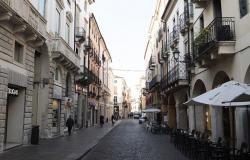Since the early hours of the afternoon, yesterday the center of Monza took a dive into the past with the medieval market and ancient crafts. To animate it, the Aurora Noctis Association with the wool workers, the participants of the Lissone nativity scene friends group, the Carate Brianza lace school, the painter Giulia Iacchetti, the Armigeri with the exhibition of knights in armor engaged in single combat; and then His Majesty’s Falconers and the pastry chef from Monza Federico Gerosa who brought Teodolinda’s Confetti, his specialty. Gerosa has been reconstructing the ancient confetti from the queen’s wedding for years. The master pastry chef tried to put the toasted almonds in their skin in a pan, with a mixture of flour and honey which ideally takes us back in time, to when sugar was not yet known which would arrive in Europe much later, with the discovery of America; even if a sprinkle of raw sugar is added on top, to give the rough effect of times gone by.
The medieval market was a rare opportunity to witness the making of bobbin lace, a particular, very refined handmade fabric that has been widespread in Italy since the 17th century. The history of the lace makers is the history of the Brianza farmhouses, carried forward by Caterina Casuscelli, coordinator of the Lace School. She grew up in an old rural house, where her mother-in-law also lived, she was able to admire the woman intent on making the bobbins dance on the bobbin, to weave the lace fabric, still one of the most precious today. After graduating from the Cantù Art Institute, Caterina founded the school for lace makers in 1984, which was awarded several awards.
“Ours is a permanent presence – Caterina says passionately – it is a source of pride for us to realize how our work manages to arouse the curiosity of so many people and push so many women to attend our school. Nowadays the time it is precious and it is not always easy to approach an art that requires precision, time and patience. Yet the suggestion remains.”
Lace is a jealously guarded tradition and it is no coincidence that it has been included in the UNESCO cultural heritage. From doilies to bags, from paintings to jewellery, to clothing, lace manufacturing lends itself to adorning the most precious objects and the demand from the fashion industry is increasing. “But we must not be fooled by modernity – underlines Caterina – the rules for lace have always been the same for centuries and the shape is always the result of traditions. In Monza, for example, the colors allowed are always white, which must be pure white and beige. In other territories it is possible to embellish the embroidery with other nuances”.
Cristina Bertolini





